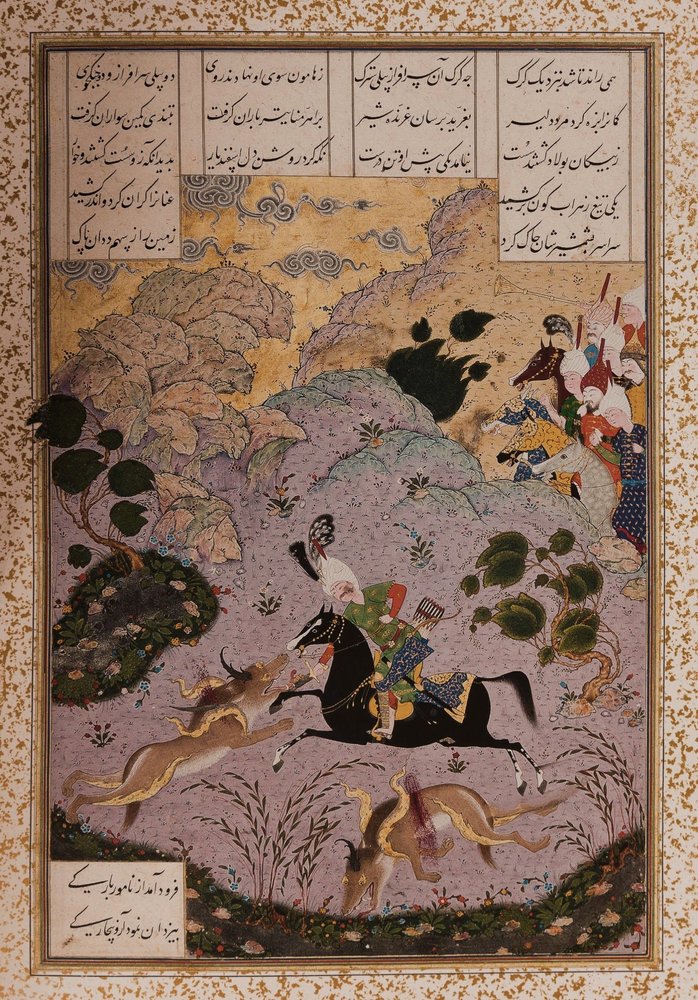The Daily Hart Challenge Year II has officially begun! And to kick the year off, I’ve decided that the first topic for this challenge will be classical Persian poetry. I know. I’m sure you’re probably wondering why. Why, out of all the genres, mediums, and styles that exist in the world of art, why on earth have I decided to start with classical Persian poetry? It may sound like a random choice, but there is a reason behind this selection. So before we dive into the topic at hand, I’m going to give you a little context about how we got here.
Last September, I found myself in the Asian arts section of the Chester Beatty museum in Dublin, Ireland. Specifically, I was walking through a section dedicated to literature and poetry in the Middle East when I read a placard that listed several of the most revered poets from the Golden Age of Persian poetry. In that moment I realized several things. One, I had never heard of any of the poets. Two, I had no idea there even was a Golden Age of Persian poetry. And three, and perhaps the most egregious, I realized in that moment that I wasn’t entirely sure what was meant by the name Persia.
Now, of course, I did know that Persia was a country at some point. But that’s about all I knew when I visited that museum. I didn’t know when Persia had been a country. I didn’t know where it had been located. And I certainly didn’t know what happened to it or why there is no longer a country called Persia on today’s world maps. This spectacular hole in my knowledge of history, combined with the compelling idea that there is an entire Golden Age of poetry that I know nothing about, led to the decision to feature classical Persian poetry as my first topic for the second year of the Daily Hart challenge. So here we go!
To kick things off, I literally googled, “What is Persia?” As you can imagine, the results were an overwhelming amount of information. But I had to start somewhere, so I took a deep breath and dove in. After reading a couple of articles and watching some videos, I now know that Persia is basically modern day Iran. I also now know that it was not just a country. There have been several Persian Empires throughout history, the most prominent of which was the Achaemenid Empire that lasted from 550 – 330 BCE. At the time, this empire was the largest in history, and the Persians were the first people to establish regular routes of communication between three different continents; Europe, Asia, and Africa. Fun fact. The Persians were also the first in the world to establish a postal service.
In the 7th century, Persia was conquered by its neighbouring Arab countries, and for the next several centuries, Arabic became the dominant language in Persia. It wasn’t until the 10th century that the Persian language made a comeback. And what was a big factor in this revival? The poetry that began to be written during this time. This is why the period between the 10th and 14th centuries is known as the Golden Age of Persian poetry. Exciting, to be sure. But also confusing. At least, it was for me. At first.
You see, when I read that placard back in Dublin, I somehow got it into my head that I was going to feature ancient Persian poetry as a topic. As in poetry from the ancient Persian Empires. However, as I delved more into the history, I discovered that very little writing and/or literature from ancient Persia survives today. And the more I read about this, the more I began to wonder if I had made a mistake. How could I feature poetry that had long since been lost, and therefore was impossible to read? After all, the whole point of the Daily Hart is to experience art. Not just read about it.
However, as it turns out, while I had made a mistake, it wasn’t the mistake I had first thought. Because what I had read on that placard back in September was classical Persian poetry, not ancient Persian poetry. What appeared to be a slight semantic difference was not slight at all. It actually was a difference of over a thousand years!
Once I had that sorted out, I was ready to go. It was time to dive headfirst into the world of classical Persian poetry. Specifically, the time when poets like Ferdowsi, Unsuri, Daqiqi, and Rudaki helped usher in a rebirth of the Persian language, and helped to preserve pre-Islamic Persian history, mythology, and culture. In other word, the Golden Age of Classical Persian poetry.
I must admit. I definitely didn’t make it easy for myself this first month. But I’m also in awe of everything I’ve already learned. I know this week reads more like a history lesson than an art exploration, but as you can see, there was a lot of historical context to figure out first. Especially considering that I chose this topic based on a five second read of a museum placard over two months ago. If I had taken 10 seconds to read it properly, I probably could have saved myself a lot of time. But as they say. You live and learn.
So that’s it for this week. Next week I’m going to dive further into the importance of poetry in Persian culture, as well as the types of poems that were popular during the Golden Age. In the meantime, please enjoy this clip from comic Maz Jobrani that I discovered during my “What is Persia?” google search. It definitely made me laugh as I sorted through several centuries of history.
See you next week!
One last note. In case you were wondering, Persia became Iran relatively recently. It was in 1935 that Iran asked the international community to make the switch.
Suggestions for artists I should check out? Please contact me with your ideas. I hope you enjoyed your daily helping of art!



